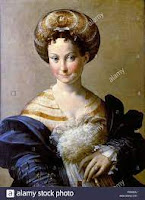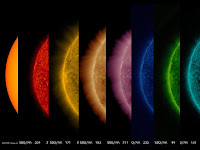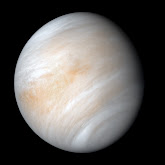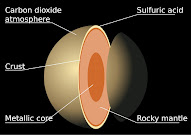Hello and Welcome again to my new Article, "The Renaissance Man", Leonardo da Vinci was a genius who invented revolutionary ideas centuries before his, the rest of the world would catch up with him. He embodies the definition of a “Renaissance Man”- one who studied and mastered a variety of different subjects. He was a Painter, Engineer, Architect, Writer, Scientist, and Inventor.
While you may know him for his most famous works of art like The Mona Lisa or The Last Supper, few people know the man behind the paintings.
 |
| Mona Lisa |
 |
Today on Biographics, we’re talking about Leonardo da Vinci.
Early Life: A baby boy named Leonardo was born on April 15th, 1452 in a Tuscan village called Vinci. The child was born out of wedlock (unmarried parents), to a wealthy legal notary named Messer Piero Fruosino di Antonio, and a beautiful peasant girl named Caterina di Meo Lippi. His father took responsibility for the boy, and raised him on the family estate with his wife. But as a bastard child, young Leonardo was not even allowed to be given his father’s last name.....
 |
(Ser Piero d'Antonio di ser Piero di ser Guido da Vinci ( 1426 - 9 July 1504 ) was the father of Leonardo da Vinci , as well as a notary and a man of Florentine culture. )
 |
| i. |
(The identity of Leonardo's mother has until now been shrouded in mystery. But a forthcoming book by Professor Martin Kemp, Emeritus Professor of the History of Art at Trinity College and Oxford University, has identified her as 15 year old orphan Caterina di Meo Lippi, who gave birth to Leonardo on 15 April 1452.Oxford University art historian Martin Kemp says Leonardo da Vinci's mother was a poor peasant. ... Researchers have claimed that his mother, Caterina, gave birth to an illegitimate son from a relationship with a lawyer when she was 15 years old. The speculation in recent years is that she was a slave.)
He was simply called “Leonardo da Vinci” which means “Leonardo, of Vinci.” Leonardo lived with his biological mother until he was 5, and his father took over the responsibility of raising him. Caterina went on to marry a man who was simply referred to as “the fighter”. Leonardo’s father, Messer, married a 16-year old noble girl named Albiera, and they had legitimate children of their own.
Instead of going to school, the countryside was young Leonardo’s classroom. Even at a young age, he was an inquisitive, and truly fell in love with nature. He wished that men could fly like birds, and swim through the ocean like fish. Together with his brothers, they played games of war, and he imagined being triumphant in battle, like the men in the stories told by his father.
However, this stage of innocence could not last forever. As he grew up, Leonardo learned that he would not be allowed to inherit the family estate. Leonardo had 9 brothers and 3 sisters. So, even if he could inherit his father’s estate, it’s not like there would be much left to go around, anyway. He had to learn a trade and figure out how to take care of himself.
 In Medieval Florence,guilds (a medieval association of craftsmen or merchants, often having considerable power) were like trade unions, and they were split up into multiple categories of jobs that a man could choose from, so long as he was born into the right social class. The highest ranking guilds were called the “Arti Maggiori”, and his father would have been apart of the guild of powerful lawyers, judges, and notaries.
In Medieval Florence,guilds (a medieval association of craftsmen or merchants, often having considerable power) were like trade unions, and they were split up into multiple categories of jobs that a man could choose from, so long as he was born into the right social class. The highest ranking guilds were called the “Arti Maggiori”, and his father would have been apart of the guild of powerful lawyers, judges, and notaries.
But as an illegitimate child, this was like being in the lower class, and he was not even allowed to join the lesser guild categories like “Arti Mediane” , which had the middle class skills like blacksmiths and stone masons.
The Florence Guild of Artists Andre del Verrocchio had several artists and craftsmen working for him in his workshop.
He would take on commissions from the wealthy and powerful Medici family, and divide the work among his students and employees. Their studio worked on improving the beauty of the city. They had to work with all mediums, whether it was carving marble statues, casting metal, or painting portraits. Even architecture, bridges, and other forms of civil engineering were all sketched by the members of the guild.
This was a very large mural on the wall of a church, so there was plenty of space for two artists to stand and work on the painting at the same time.
Verrocchio instructed Leonardo to paint two angels that had been included in his rough sketch. When Da Vinci was done, Verrocchio was in shock. He could not believe how gorgeous and life-like the painting was.
Approach to Scientific Investigation and Experiments:
Leonardo wrote:
(The lights which may illuminate opaque bodies are of 4 kinds. These are; diffused light as that of the atmosphere; And Direct, as that of the sun; The third is Reflected light; and there is a 4th which is that which passes through [translucent] bodies, as linen or paper etc.)
However, his talent was also a curse, because it caused a lot of jealousy among the art community.
At 24 years old, Da Vinci was accused of having sex with a male prostitute, and he was arrested for sodomy. At that time, the punishment for sodomy was being burned to death. But when he went to trial, no evidence or witnesses were presented, and they could not prove that he did anything illegal. So they let him go. However, even though he was found “not guilty”, he wrote in his journals that this scandal very seriously hurt his reputation. Fewer clients wanted to work with him around Florence, despite his obvious talent.
We don’t know his actual sexual orientation, except that he never got married. Some believe that he chose to be celibate in order to focus more on his work. At the end of the day, whoever turned him into the authorities wanted him dead. As awful as this sounds, medieval times were truly cut-throat, and men of high standing always had to watch their backs to make sure they were not killed by their enemies.
One of Leonardo’s earliest known sketches was his observation of Baroncelli’s body in the gallows called “The hanged man”. After this dispute between the Baroncellis and the Medici families, Florence and Naples were on the brink of war. (Study of the hanged bernardo di bandino baroncelli assassin of giuliano de medici - by Leonardo da Vinci)
The men in Da Vinci’s guild were forced to stop working on art, and use their Engineering skills to defend the city, instead.
Since Da Vinci was a bastard, he could not become a knight and serve in a royal court, so he thought this was far more exciting than painting Catholic murals. He started to design ladders and massive weapons to help defend Florence, should they ever need it. Perhaps he saw this as his way to be remembered in the history books.
A Renaissance Arms War!:
Three Racks of Barrels: (The three racks of barrels Allowed the re-loading of one rack while another was being fired and could maintain continuous firepower. The 'fan type' gun with its array of horizontal barrels allowed for a wide scattering of shot. These breech loading, water-cooled guns were years ahead of their time and it's interesting to note that steam cannons were used in World War II.)
Tread Wheel Machine Gun (He also made drawings for a repeating 'machine gun’ operated by a man-powered treadmill. Treading on the outside of the wheel instead of the inside gave greater leverage to the operator. Additionally, its lightweight and large wheels would have provided for excellent mobility on the battlefield. The aim of the tiers is that in rotation, the first tier is fired.)
 Flying Machines: Da Vinci’s fascination with the mechanics of flight did not only extend to his many studies of birds, their wings and propulsion, he also realised the importance that manned flight could have on warfare. His many concept studies for flying machines are a testament to his inquiring mind and he produced designs that were years ahead of their time. Imagining bombs and arrows raining down on enemy positions were notions that only became a reality centuries later in the first and second world wars of the twentieth century. Leonardo had also considered the possibility of an enemy using flying machines in battles, and designed weapons that would shoot them down!.
Flying Machines: Da Vinci’s fascination with the mechanics of flight did not only extend to his many studies of birds, their wings and propulsion, he also realised the importance that manned flight could have on warfare. His many concept studies for flying machines are a testament to his inquiring mind and he produced designs that were years ahead of their time. Imagining bombs and arrows raining down on enemy positions were notions that only became a reality centuries later in the first and second world wars of the twentieth century. Leonardo had also considered the possibility of an enemy using flying machines in battles, and designed weapons that would shoot them down!. (Most of Da Vinci's Aeronautical designs were Ornithopters, machines that employed flapping wings to generate both lift and propulsion. He sketched such flying machines with the pilot prone, standing vertically, using arms, using legs. He drew detailed sketches of flapping wing mechanisms and means for actuating them. Da Vinci seemed truly excited by the possibility of people soaring through the skies like birds. One of da Vinci's most famous inventions, the flying machine (also known as the "Ornithopter") ideally displays his powers of observation and imagination, as well as his enthusiasm for the potential of flight.)
(Most of Da Vinci's Aeronautical designs were Ornithopters, machines that employed flapping wings to generate both lift and propulsion. He sketched such flying machines with the pilot prone, standing vertically, using arms, using legs. He drew detailed sketches of flapping wing mechanisms and means for actuating them. Da Vinci seemed truly excited by the possibility of people soaring through the skies like birds. One of da Vinci's most famous inventions, the flying machine (also known as the "Ornithopter") ideally displays his powers of observation and imagination, as well as his enthusiasm for the potential of flight.)He was very restless at that time, and didn’t have the patience to actually sit and complete a lot of his projects.
He had so many brilliant ideas, he sometimes had trouble executing them. Da Vinci was actually sued more than once for getting paid by a patron, and then failing to finish his work, as promised. With this, coupled with the accusation of sodomy, his talent was not enough to make up for his bad reputation.
He thought that maybe, it was time to start over somewhere new. A New Life in Milan Even though he was more talented than many of the other painters in Florence, Leonardo Da Vinci still went through a midlife crisis when he was 30 years old. He realized that the lifestyle of a professional artist did not suit him, and he craved the adventure of having a career in weapon designs.
He had an entire book filled with incredible inventions that would not be made until years later, like a tank, a giant crossbow, underwater scuba gear, and even a robotic soldier.
He was truly hundreds of years ahead of his time, but without a war, these weapons would never actually come to life. Leonardo da Vinci planned to move to Milan, because it is the most northern Italian state, but he wanted to secure employment before he made the journey. Since the city is much closer to France, they were far more interested in gathering weapons to defend the country.
 He sent a letter to the Duke of Milan, claiming that he was a weapon’s design expert, and included a few pages from his sketchbook. At the very end of the letter, he included a single line mentioning that he was also a painter.
He sent a letter to the Duke of Milan, claiming that he was a weapon’s design expert, and included a few pages from his sketchbook. At the very end of the letter, he included a single line mentioning that he was also a painter.Ludovico Sforza was the temporary Duke of Milan, holding the position of power until his nephew came of age. (Ludovico Maria Sforza, also known as Ludovico il Moro, was an Italian Renaissance nobleman who ruled as Duke of Milan from 1494, following the death of his nephew Gian Galeazzo Sforza, until 1499. A member of the Sforza family, he was the fourth son of Francesco I Sforza.)
The Sforza family had not been in power for very long, especially compared to the likes of the Medicis. Sforza invited Leonardo da Vinci to visit, and he was overjoyed, hoping that he would finally be able to make a career change.
(The Lady with an Ermine is a portrait painting widely attributed to Italian Renaissance artist Leonardo da Vinci. Dated to c. 1489–1491 the work is painted in oils on walnut panel.)
Even though he came to Milan to escape being a painter, he still blew people away with his talent. Sforza was so impressed, he commissioned a statue of a 24-foot tall horse. Da Vinci told him that it would take at least 3 years to complete. In reality, Da Vinci was stalling for time, because without the help of his master’s studio, he had no idea how he was going to pull off a 24-foot tall metal cast horse. Remember- this was back in the 1400’s, so there was no benefit of modern machinery to help him. The Sforzas were still establishing themselves, and the Duke of Milan believed that paying for things like metal statues would somehow prove their permanence in high society.
By a stroke of luck, Sforza decided to go to war, and he needed the metal resources for his army’s weapons.
Yet again, Da Vinci thought this might be his time to shine with his weapon designs, but there weren’t enough resources to pay for their creation.
At the time, the priests were actually very annoyed with him, because it took him over 3 years to complete the painting, which is a mural on the wall of the church.
For 17 years, Da Vinci enjoyed a life of financial security and respect in Sforza’s royal court. During the time that he lived in Milan, Da Vinci had a secret project that he never dared to tell anyone, and it is likely a good reason why the rest of his work was taking so long.
Approach to Human Anatomy:
At that time, autopsies (a post-mortem examination to discover the cause of death) and any other form of disturbing the dead was frowned upon by the Catholic Church. He already knew what it was like to have a soiled reputation back in Florence, so he was far more careful this time while leading a double life.
Leonardo da Vinci would write in notebooks about his scientific experiments, inventions, and artistic ideas. There are over 15,000 pages of his notes that survived.
He even wrote some of those notes backwards, so you can only read them when looking in a mirror. Some people believe he did this because he was worried that his rivals would steal his ideas.
Home coming When Leonardo Da Vinci was 50 years old, the Sforza family lost their position of power, and the French invaded Milan. When they saw the giant clay horse statue standing on the estate, they used it for target practice.
Leonardo da Vinci had to leave Milan with the bare necessities, like his journals, and left all of his works of art behind. He decided to travel from place to place, once again trying to pitch his ideas for military weaponry around Italy.


Da Vinci was forced to reluctantly move back to Florence, because he feared that everyone would still remember his bad reputation.
Despite the long beard you see in most depictions of Da Vinci, he actually spent all of his younger years making sure he was always clean-shaven, and wore the finest clothes. He even had professional musicians playing music for his clients while they sat for their portraits, and the whole process felt like going to a luxury spa.
The two artists deeply disliked each other, and even got into a fight out in public. Secretly, Da Vinci would go home to write about how depressed he was to be getting older, and the fear and anxiety rules his thoughts.
Be Careful What You Wish For Since Da Vinci could no longer secure his place in the Florence art scene, he decided to try his luck at weapon design one last time.
Pope Alexander had a bastard son named Cesare Borgia. Some people say that he was a great leader, while others say that Borgia was a bloodthirsty ruler who killed anyone who got in his way.(Pope Alexander VI, was pope from 11 August 1492 until his death in 1503. Born into the prominent Borgia family in Xàtiva in the Crown of Aragon, Rodrigo studied law at the University of Bologna.)
Machiavelli's famous book called "The Prince" was even based on Borgia as an example of what a ruler must be in order to stay in power.
(Cesare Borgia was an Italian politician and condottiero whose fight for power was a major inspiration for The Prince by Machiavelli. He was an illegitimate son of Pope Alexander VI and member of the Spanish-Aragonese House of Borgia.)
Da Vinci got everything he wanted?, but it was at a price he never expected. The only reason why Borgia was willing to pay for the creation of all of these weapons was because he wanted to kill as many enemies as possible. Until this point, the idea of war had been simply a concept to Leonard Da Vinci, and stories of knights going to battle seemed like good fun.
For the first time in his life, Da Vinci actually witnessed what a bloody battle looked like, and it was too gruesome for him to handle. He wrote, “Truly, man is more savage than beast, for our brutality exceeds theirs. We live by the death of others.”
The straw that broke the camel’s back was when Borgia ordered the death of one of Da Vinci’s close friends. He quietly left Borgia in the dead of night and moved back to Florence, where he returned to a peaceful life of painting portraits.
Unlike all of those portraits that were commissioned and given away, he carried around the portrait of Mona Lisa with him for the rest of his life.
For once, this was a piece of art that was done just for himself, but he was constantly changing it, because he never felt he got it exactly right.
There is a commonly told story that during a flight attempt with these wings, someone fell and broke their leg.
After this failed attempt, he designed a motor that would flap the wings, but it never worked properly. However, he did eventually design the first wing that looks very much like what we use in modern-day airplanes.
Aside from the patrons that he served, Leonardo da Vinci was not yet famous around the world. He intended to publish books, but he never actually went through with it. As we mentioned earlier, he wrote and sketched over 15,000 pages on a variety of subjects, but he was a perfectionist.
So he continued to add on more and more information, because he never felt that they were complete. Among these notes, there are multiple sketches of an old man with a beard. People assume that this was his self-portrait, but no one knows for sure. However, this image is used to portray him in popular culture, and it’s how he is remembered today.
King Francis I in France had been collecting Da Vinci’s pieces for years, and he wrote a letter to invite him to live in his chateau. He agreed to move to France, and when he was 65 years old, and he had a stroke, which paralyzed his arm.
The king’s castle became his comfortable retirement, and he was given the best medical care money could buy.
When he died in the year 1519, he left the Mona Lisa and all of his sketchbooks and journals to his loyal apprentice.
Born a bastard, Leonardo Da Vinci died like a king. His life lives on forever in his work, and he continued to serve as an inspiration to people around the world for centuries to come.
Conclusion
Leonardo da Vinci may well have been the greatest inventor during the Renaissance; however he had very little effect on the technology of his time. Da Vinci drew sketches and diagrams of his inventions, which he preserved in his notebooks, but he either neglected building them or was unable to convince his wealthy patrons to finance construction of the designs – although many of them could not have been built with the technology of the day. As a result, almost none of da Vinci's inventions were built during his lifetime; and because he never published his diagrams, little was known about them until his notebooks were discovered after his death. His inventions have continued to inspire engineers and scientists to this day.
i have tried my best to describe the Genius , i appreciate your comments in comment section....
Regards
Tahir Ahmad Dawood






















































